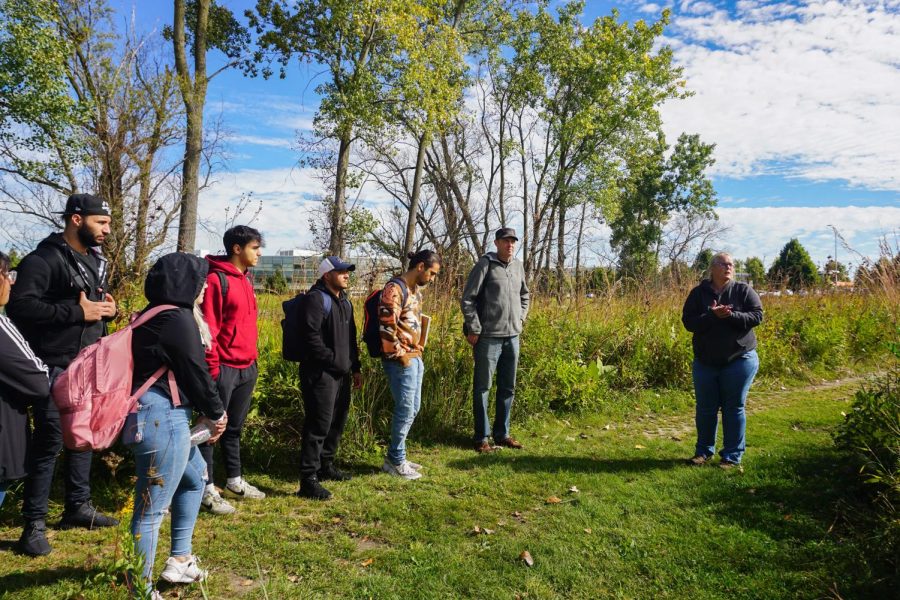Preserving the Prairie with Pictures
Susan Kirt, daughter of COD prairie founder, is the Artist-in-Residence this fall, to guide ecology, photography and architecture students.
Susan Kirt led students of the Architectural Design class on a tour, where she explained the history and preservation of the prairie. This was one of her ongoing workshops, as the fall 2022 Artist-in-Residence.
October 3, 2022
Forty-eight years ago, College of DuPage became the first community college to have prairies as study spaces. It was through the efforts of Russell Kirt, who worked to restore the local Illinois prairie land by reintroducing native plants. From the 1980s onward, COD students cultivated these plants just like the prairie ecology students do today.
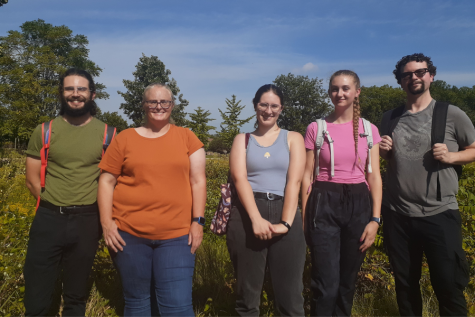
This fall, these students were visited by the prairie founder’s daughter, Susan Kirt. On the immersive tours, Susan described how the prairie was established and how practices like controlled prairie burns and seed collection remain vital to preserving the landscape. Kirt recalled stories of the prairie from her youth. She used to carry buckets of water to the oak tree sapling, which were planted in the 1990s. She explained how the pond was used for irrigation, and when it flooded, she would go into the water to unclog it.
It was formative experiences such as these that instilled her passion and knowledge for prairie preservation. Now, she has a nature photography website and has worked on many preservation initiatives. In her latest project this fall, as Artist-in-Residence at College of DuPage, Susan brought the wonders of the prairie to students of ecology, photography and architecture.
Jackie Weaver is professor of the Art and Nature class and an organizer of the Community Artist-in-Residence program. Weaver remarked that students learned how to see the natural world as artists during the prairie walk.
“They were up-close, in the plants, taking time to see things they might not normally notice and appreciate these natural areas on campus. This is one of the ways art functions; artists learn to be observers of the world around them.”
For digital photography student Shabnam Duzenji, she found joy in hearing Susan share wisdom about a wide range of subjects during the prairie walk. “She’d provide feedback and tips on photography, while also giving fun facts about the local plants and animals we saw during our walk. One great thing about photography is that it lets us capture exciting moments in nature.”
A specific moment was when students got photos of garter snakes resting in a fern plant. Susan explained how much of a lucky chance it was to find the snakes long enough for students to get a photo of them.
In her Artist Talk presentation, Susan Kirt showed one of the professional cameras she uses. It was the Canon MP-E 65mm f/2.8 1-5x Macro Photo Lens camera. However, she also reminded students that cell phone photos can be just as useful, if taken properly.
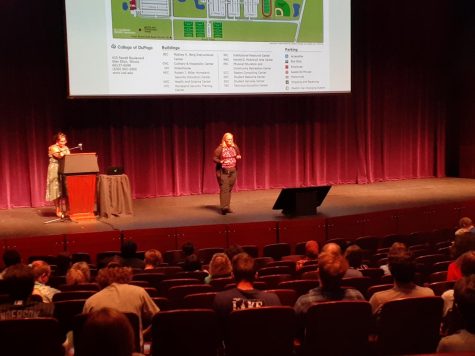
“My big tip for anyone trying to take a picture of any animal is get the eyes in focus,” she advised. “Whether it’s a buffalo, a mouse, an insect- get on their level. If the eye is in focus, we can ignore the rest of the image’s blurriness.”
She also provided specific advice for insect photography. “Look at the plants that are blooming, such as goldenrod and aster, both of which are popular with insects. Be patient. If you scare off insects, they’ll come back.”
Susan encouraged students to find workshops and field research opportunities. Grants are often needed to fund prairie work. Students can make use of these things to develop their interests in prairie ecology.
Susan emphasized how this work contributes to the preservation of natural areas.
“On campus, we have over 30 acres of restored prairie, ponds, and woodland. By having this prairie on campus, not only can we enjoy it, we can help vulnerable and endangered species.”
Susan recommended websites like iNaturalist where biologists and amateurs alike can upload their photography to map the biodiversity of their regions. Another website is BugGuide, which has entomologists to identify the insect species. There are also free, downloadable guides, like the Field Museum’s Midwest Native Garden guide which Susan helped create. Using these resources, Susan contributed her photography to create indexes of prairie wildlife and raise awareness for endangered species.
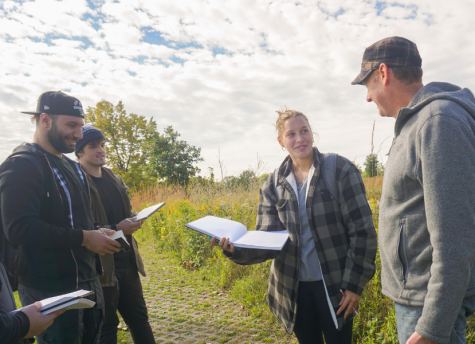
Architecture also benefits from prairie research. Students learned how the buildings designed for the Midwest prairie landscape should accommodate wildlife. During the prairie walk, the class had a chance to sketch design ideas.
“I love the design and drawing aspect,” Jenna Johnston, a second-year architecture student, said. “It lets me be creative and show my ideas.”
Johnston said it’s important to design buildings that prioritize the safety of the prairie wildlife.
“You want to find materials that speak to the place, for example bird safe glass. Looking at normal, solid glass, there usually is a reflection of trees and the nature around it. Birds don’t see what’s beyond and hit the glass, snapping their neck. Ways to have bird safe glass would be a screen on the glass, or hovering on top, to minimize the reflection.”
Johnston concluded that these eco-friendly designs could protect the migratory birds that pass through the COD prairies.
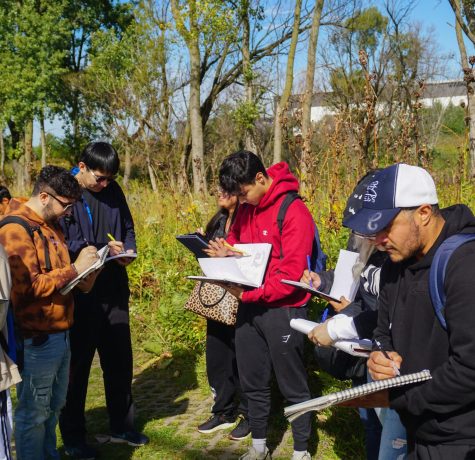
These students’ unique ideas are inspired by the prairie and directly translate into their career goals.
Jax Lopez, another student from the architectural design class, described that his ambition is to “design sustainable, energy efficient, and eco-friendly structures. To be a successful architect, I believe in providing designs that blend with existing surroundings. Design Studio challenges me to think and approach issues differently to find a variety of solutions.”
For students interested in working with the COD prairie, there’s another chance in spring 2023. Pedro Gramaxo, an artist from Portugal, will also work with students in the natural areas on campus. If unable to join the Artist-in-Residence classes, students can also volunteer with prairie work events. Every student has the chance to contribute to the decades-long legacy of prairie conservation at College of DuPage.


